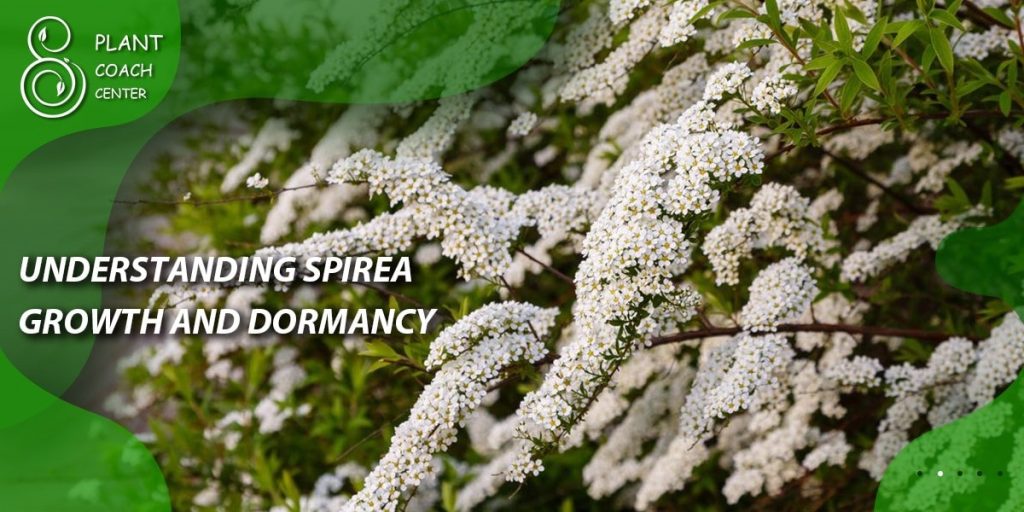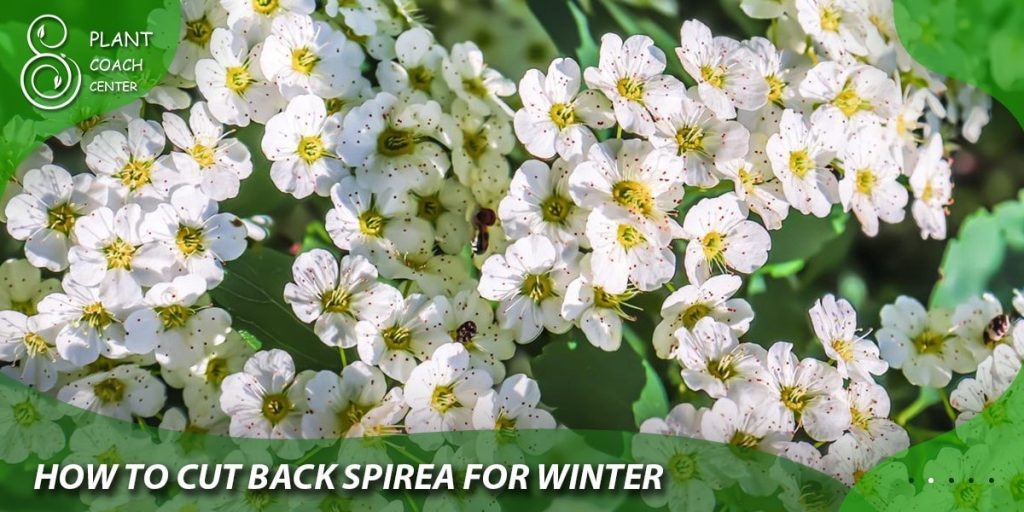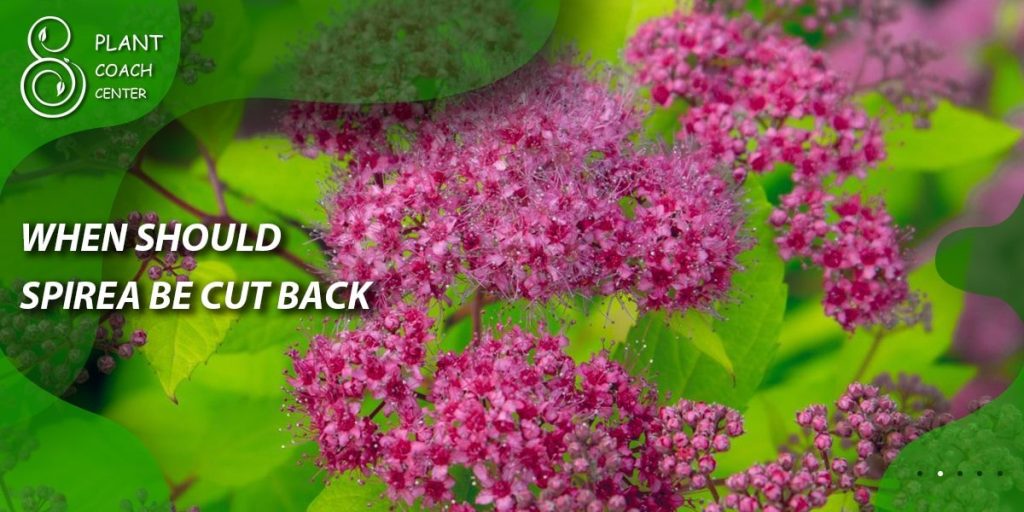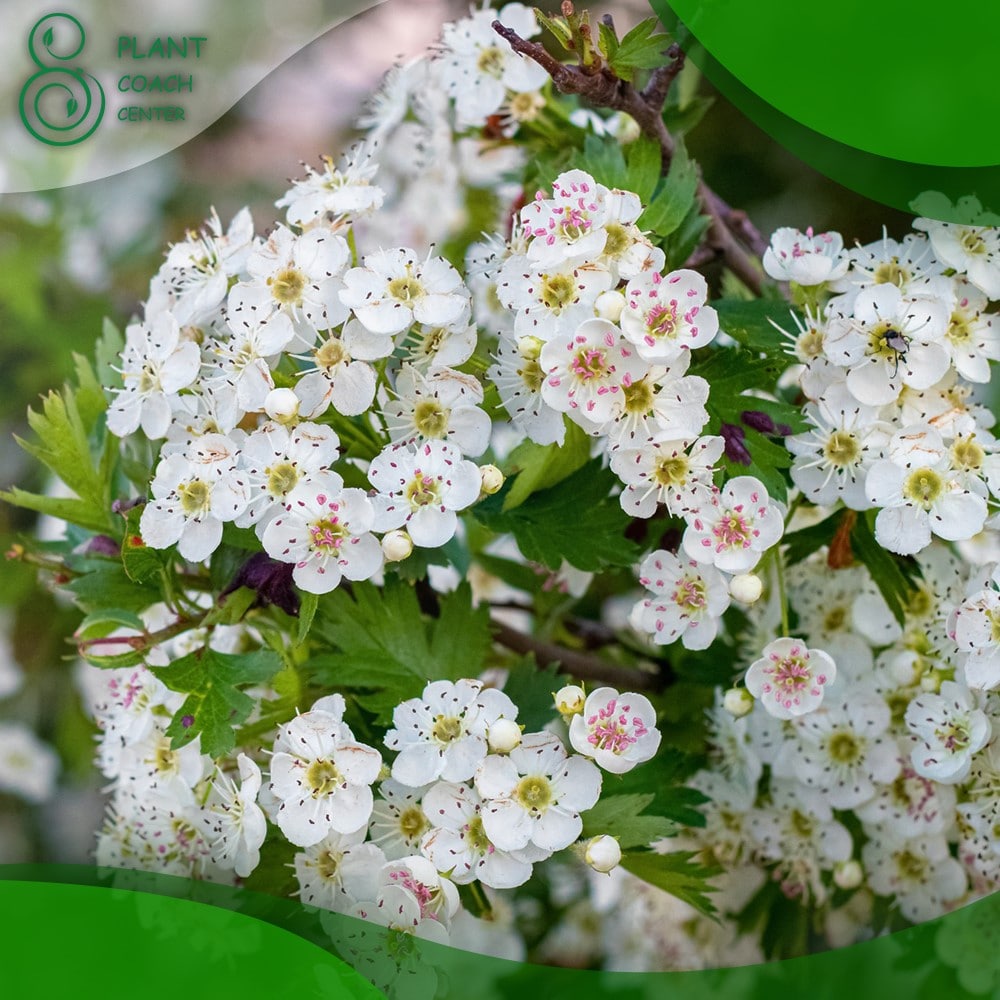When To Cut Back Spirea
Welcome to the enchanting world of Spirea, where nature’s beauty flourishes in the form of charming deciduous shrubs. These delightful plants have captured the hearts of gardening enthusiasts and landscape lovers worldwide. Their vibrant blooms and lush foliage bring an exquisite touch to any garden. As the seasons change and winter approaches, we must adapt our care routines to ensure the health and longevity of these beloved shrubs.
Winter pruning is a fundamental practice, playing a key role in maintaining Spirea’s allure and health throughout the year. In this comprehensive guide, we’ll explore the art of winter pruning for Spirea, shedding light on the optimal timing and precise techniques to keep your Spirea thriving.

Understanding Spirea Growth and Dormancy
To master the art of winter pruning, we must first understand the natural growth cycle of Spirea. During the active growing season, Spirea transforms into a mesmerizing display of colors, delighting us with its exuberant blooms and vigorous growth. However, as the days grow shorter and the temperature drops, Spirea gracefully enters a period of dormancy.
This phase is crucial for the plant’s survival, as it conserves energy and redirects resources to endure the harsh winter months. Recognizing the signs of dormancy enables us to determine the best time to undertake winter pruning, providing our Spirea with the best chance of flourishing in the coming seasons.
The Best Time to Cut Back Spirea for Winter
The Best Time to Cut Back Spirea for Winter is critical to caring for these lovely deciduous shrubs. It refers to the ideal timing to prune or trim back Spirea before the onset of winter. Winter pruning is essential as it helps Spirea maintain its health, vigor, and aesthetic appeal during the colder months when the plant enters dormancy.
The timing of winter pruning is influenced by two primary factors: the specific Spirea variety and the local climate. Different Spirea varieties have distinct growth patterns and flowering periods, which can affect when they should be pruned. For example, Spiraea japonica, commonly known as Japanese Spirea, typically blooms from late spring to early summer. On the other hand, Spiraea thunbergii, or Thunberg Spirea, produces its flowers in the early to mid-spring.
To determine the right time for winter pruning, gardeners must also consider the local climate and hardiness zone. Hardiness zones are geographical regions that indicate the average lowest winter temperatures, providing gardeners with valuable information on what plants can thrive in their area. By knowing their hardiness zone, gardeners can tailor their winter pruning schedule to match the local weather conditions and ensure that Spirea is pruned before the harshest winter temperatures arrive.
Pruning Spirea appropriately is crucial for the plant’s overall health and future growth. Cutting back the shrub too early, while still actively growing, can disrupt its natural growth cycle and affect the development of new flower buds for the following year. On the other hand, pruning too late in the season can leave the plant vulnerable to winter damage since new growth won’t have time to harden off before the colder temperatures set in.
For most Spirea varieties, the best time to cut back is during late fall or early winter when the plant has started to enter its dormant phase. At this time, the leaves have usually changed color and started to drop, signaling the plant’s readiness for winter. Pruning during this period allows the plant to focus its energy on root development and preparing for winter, resulting in healthier and more resilient growth in the following spring.
The best time to cut back Spirea for winter varies depending on the specific variety and the local climate. Gardeners should take note of the plant’s blooming period and hardiness zone to determine the optimal timing. Pruning during the late fall or early winter, when the plant is transitioning into dormancy, ensures that Spirea remains healthy, vibrant, and well-prepared to dazzle us with its beauty in the coming growing season.

Winter Pruning Techniques for Spirea
Winter pruning techniques for Spirea encompass a range of skills and approaches to maintain these deciduous shrubs’ health, shape, and beauty during the dormant winter season. Proper pruning during this time helps remove dead or diseased wood, encourages new growth, and shapes the plant for the coming year’s blooming season. Understanding and implementing these techniques will enable gardeners to cultivate Spirea with optimal vigor and splendor.
Tools and Equipment
The first step in mastering winter pruning techniques is ensuring you have the right tools and equipment. Quality hand pruners, loppers, and pruning saws are essential for making clean and precise cuts. Blunt or poorly maintained tools can lead to ragged cuts that may invite pests and diseases into the plant. Therefore, keeping the pruning tools sharp and sanitized is essential for promoting the plant’s overall health.
General Pruning Guidelines
Before delving into specific techniques for each Spirea variety, it’s crucial to establish some general pruning guidelines. Always begin by assessing the shrub’s health and identifying any diseased, dead, or damaged wood. Removing these parts promptly helps prevent the spread of diseases and improves the plant’s appearance. Moreover, focus on shaping the shrub by selectively removing unwanted growth to achieve a balanced and aesthetically pleasing form.
Selective Pruning for Different Spirea Varieties
Each Spirea variety has unique growth habits, flowering times, and pruning requirements. Understanding these differences will allow you to tailor your pruning approach accordingly. For example, Spiraea japonica, known for its prolific blooms, benefits from thinning cuts to encourage new flowering wood while removing overcrowded or crossed branches. On the other hand, Spiraea thunbergii, which produces a graceful arching form, requires light pruning to maintain its natural shape and appearance.
Pruning for Rejuvenation
Over time, Spirea may become leggy or overgrown, reducing its flowering potential. Rejuvenation pruning is a technique used to revitalize older or neglected shrubs. This process involves cutting back the entire plant to a few inches above the ground in late winter or early spring. While this may seem drastic, rejuvenation pruning stimulates new growth. It encourages a healthier, more compact plant with increased blooming capacity.
Deadheading for Continued Blooms
Some Spirea varieties can produce multiple flushes of blooms during the growing season. To encourage continued flowering, practicing deadheading is essential – removing spent flowers as they fade. Deadheading redirects the plant’s energy from producing seeds to creating new blooms, prolonging the flowering period and enhancing the overall display.
Pruning Cautions
While pruning is essential for Spirea’s health, it’s crucial to avoid over-pruning, which can weaken the plant and inhibit flowering. Additionally, refrain from cutting back the entire plant too late in the season, as this may leave it vulnerable to winter damage. Striking a balance between shaping the shrub and maintaining its natural growth pattern is key to successful winter pruning.
Mastering winter pruning techniques for Spirea involves selecting the right tools, understanding each variety’s specific requirements, and implementing proper pruning guidelines. By carefully shaping and rejuvenating the shrub, gardeners can promote vigorous growth, maximize blooming potential, and ensure their Spirea’s continued health and beauty. With these techniques, you can confidently undertake winter pruning, setting the stage for a spectacular show of colors in the coming growing season.

Step-by-Step Guide: How to Cut Back Spirea for Winter
A step-by-step guide for cutting back Spirea for winter pruning ensures that you approach the task confidently and precisely, promoting your shrubs’ health and beauty. Following these steps, you can assess Spirea’s needs, make informed pruning decisions, and achieve optimal results.
Assess the Health and Shape of the Shrub:
Before you begin pruning, closely examine your Spirea to evaluate its overall health and shape. Identify any dead, diseased, or damaged branches that need removal. Observe the overall form of the shrub and consider the desired shape you want to achieve through pruning.
Prepare the Tools
Ensure your pruning tools are clean, sharp, and in good working condition. Clean and sanitize the blades of your pruners or shears to minimize the risk of spreading diseases between cuts. Sharp tools make clean cuts, reducing stress on the plant and promoting faster healing.
Start with Deadwood Removal:
Begin by removing any dead or dying branches. These are often discolored, brittle, or lacking buds or leaves. Make clean cuts close to the main stem or parent branch, taking care not to damage the surrounding healthy wood.
Address Diseased or Damaged Wood
Identify any diseased or damaged branches with signs of discoloration, cankers, or pest infestation. Remove these branches by making clean cuts into healthy wood, ensuring you remove all affected areas.
Thin Out Overcrowded Areas
Look for areas where branches are overcrowded or crossing each other. These can impede air circulation and increase the risk of disease. Selectively remove some branches to improve airflow and create a more open and balanced structure. Choose the oldest or weakest branches for removal.
Shape the Shrub
Consider the desired shape and size of your Spirea. Selectively prune branches to maintain the natural habit or create a specific shape to achieve a balanced and aesthetically pleasing form. Avoid excessive pruning, which can reduce flowering and overall plant vigor.
Avoid Drastic Cuts Late in the Season
As winter approaches, avoid making drastic cuts that may stimulate new growth, as it may not have time to harden off before freezing temperatures arrive. Late-season pruning may also leave the plant vulnerable to winter damage. Focus on maintenance pruning and light shaping instead.
Dispose of Pruned Material
Properly dispose of the pruned material, including dead or diseased branches, to prevent the spreading of diseases or pests. Consider composting healthy, non-diseased material if appropriate.
Monitor and Maintain
After pruning, regularly monitor the health and growth of your Spirea throughout the winter months. This will allow you to identify any signs of disease or pest infestation early on and take appropriate action.
By following this step-by-step guide, you’ll be able to confidently approach winter pruning for your Spirea. Remember to assess the health and shape of the shrub, prepare your tools, remove dead and diseased wood, thin out overcrowded areas, shape the shrub according to your desired form, and avoid drastic late-season cuts. With each pruning cut, you contribute to your Spirea’s overall health, vigor, and visual appeal, setting the stage for a stunning display of blooms in the upcoming growing season.
Winter Care Tips for Spirea
Providing proper winter care for your Spirea becomes paramount as winter casts its icy veil over our gardens. Frost and freezing temperatures can pose potential risks to your precious shrubs, but you can shield them from harm with the right care.
Our winter care tips encompass crucial practices such as mulching and watering, which help safeguard your Spirea against the elements. Furthermore, we will explore preventive measures to protect your shrubs from pests and diseases that might take advantage of Spirea’s dormant state.
pic 4 time to cut back spirea
Common Mistakes to Avoid in Winter Spirea Pruning
As with any gardening practice, winter pruning can have its share of potential pitfalls. To ensure the health and beauty of your Spirea, we will highlight common mistakes to avoid during the pruning process. One such mistake is over-pruning, weakening the plant and hindering its growth potential.
Additionally, pruning at the wrong time may disrupt the natural growth cycle, diminishing blooms, and overall health. We’ll also emphasize the importance of maintaining your pruning tools, as clean and precise cuts are essential for the well-being of your Spirea.
Frequently Asked Questions About Winter Pruning for Spirea
Gardening enthusiasts often have questions about winter pruning, and we’re here to provide answers. This section will address frequently asked questions, including whether it’s suitable to prune Spirea in late fall or early spring and the best timing relative to the first frost. We aim to leave no stone unturned by empowering you with knowledge, ensuring you can confidently nurture your Spirea throughout the winter months.
Winterizing Spirea in Harsh Climates
Extra precautions are essential for those living in regions with particularly cold winters to safeguard your Spirea from potential damage. We will explore effective winterizing strategies, equipping you with the knowledge to protect your cherished shrubs from the most severe winter conditions. By implementing these protective measures, you can rest assured that your Spirea will emerge unscathed and continue to captivate with its beauty.
Winter Pruning for Specific Landscaping Goals
Winter pruning not only serves as a maintenance practice but also as a canvas for your landscaping dreams. This section explores the artistic side of pruning, allowing you to shape your Spirea for aesthetic purposes. By skillfully sculpting your shrubs, you can create captivating focal points in your garden that leave a lasting impression on visitors. Additionally, we’ll delve into techniques that encourage abundant flowering and foliage growth, further enhancing the allure of your Spirea.
Spirea Maintenance Beyond Winter Pruning
As we conclude our comprehensive guide to winter pruning, it’s essential to recognize that this is just one facet of caring for your Spirea. We’ll highlight essential tasks and considerations for spring and summer pruning, fostering continuous health and vitality in your beloved shrubs throughout the year. By establishing a holistic care routine, you can enjoy the beauty of your Spirea year-round, ensuring it graces your garden with its vibrant presence.

Final words
Winter pruning for Spirea is an art that harmonizes with the ever-changing seasons, ensuring our cherished shrubs continue to blossom and captivate us year after year. Armed with the knowledge and techniques shared in this comprehensive guide, you are now well-equipped to embark on caring for your Spirea during the winter months.
As you nurture your plants with love and attention, they will reward you with boundless beauty and vibrancy, transforming your garden into a haven of natural wonder. Happy pruning and gardening as you witness the flourishing beauty of your Spirea and experience the joy it brings to your heart and soul.
When is the best time to prune Spirea for winter?
Late fall or early winter.
How can I rejuvenate overgrown Spirea?
Perform rejuvenation pruning by cutting back the entire shrub to a few inches above the ground.
Why is winter pruning essential for Spirea?
Winter pruning promotes plant health, removes deadwood, and shapes the shrub for vibrant blooms in the upcoming season.







